Malus sieversii, Hard-Core Apples
Wild Apples are one of the most common over-looked foraging foods. People take one taste, spit it out, and go on their way.
Because of the story of Johnny Appleseed (who was a real person) most folks think apples aren’t native to North America. There were plenty of apples here when Europeans arrived but they were Wild Apples not cultivated apples. What’s the difference? Taste and size. Most wild apples are small and sour, domesticated apples tend to be larger and sweeter. What most people don’t know is that wild apples can be baked or roasted (as in near an open fire or in an oven) and made very tasty. While some wild apples are too bitter to eat even after cooking many are transformed into good eats.
When I was a kid foraging in the Maine woods wild apples were very common. In fact, of the eight or so feral apple trees I knew of only one had a cultivated heritage. It was a Golden Delicious, and my least favorite. The rest were usually sour raw but wonderful when roasted by a campfire (and no pots to clean.) Unfortunately there are few if any Wild Apples in this area of Florida. It is simply too hot. They like northern climes and northern people liked wild apples, too. No less a person than New England native Henry David Thoreau wrote a 10,000-word essay on the Wild Apple.
The domestic apple as we know it has been around some 6,000 years and came from Kazakhstan. There apple trees growing to 60 feet were the dominant species of the forest. That is something to think about, apple trees the size of Oaks, a forest of them… Orchards there today are remarkable in that the trees are very resistant to disease, unlike commercial crops. Further, two apples from that area — the Red Delicious and the Golden Delicious — are the parents of 90% of modern commercial eating apples. The Red Delicious was hybridized into the Fuji and the Empire, and the Golden Delicious into the Gala, the Jonagold, the Mutsu, the Pink Lady and the Elstar. The Granny Smith (below right) however, came from a back yard in Australia.
It originated in 1868 from a chance seedling propagated by Maria Ann Smith (née Sherwood) born 1799, died 9 March 1870. Researchers think the now well-known green apple was a chance cross between Malus sylvestris, a European Wild Apple — perhaps from France via Tasmania — with the domestic apple M. domestica. Widely propagated in New Zealand. It was introduced to the United Kingdom around 1935 and the United States in 1972. Each Granny Smith apple today is a clone. Actually every commercial apple is a clone. One cultivated apple that does grows in Florida is the Apple Anna, which was a chance seedling found in the Bahamas and can withstand the summer heat. Worldwide some 55 million tons of apples are harvested annually worth some $50 billion annually. Americans eat on average, as of this writing, 126 apples a year each. Meanwhile wild apples, which are free, feed mostly wildlife.
Often a wild apple’s taste will be moderated because of hybridizing with cultivated apples. There are no hard and fast rules identifying which are edible raw. You just have to taste and experiment with each wild apple tree you find. They also usually have more cholesterol-reducing pectin than cultivated apples thus are added to other fruits and domestic apples when making jelly. Incidentally, there is no such species as a “crabapple” per se. Crabapple, like “pearl onion” is a reference to size. Crabapples, like pearl onions, are small and any small apple can be called a crabapple as any small onion can be a pearl onion. The fascinating aspect of apples is that every apple seed is totally different than the parent tree. Something like snow flakes no two apple seeds are genetically alike thus what kind of tree each will produce is a mystery. Every named apple you eat came originally from just one seed and one tree. As mentioned above they are clones which is why it takes a long time to get a new apple into production.
Besides foraging for wild apples I used to help my father make pieces of apple wood into tobacco pipes. We’d find a suitable size piece, rough cut and drill it then boil it for a few hours to drive the sap out of it. Then it was carved and sanded. A bit of bass wood became the stem. I still have one of them around after more than 50 years. You can read about that here. If you are a hunter wild apples trees are a good place to find game. When I roamed the woods as a boy wild apple trees were the prime place to flush partridge in the fall and later deer. A huge variety of wildlife like the apple among them foxes, raccoons, bears, coyotes, opossums, rabbits, squirrels, grouse, prairie chickens, and quail. They know good food when they find it.
Malus sieversii (MAL-us see-VER-see-eye) is the botanical title for these wild fruits. Malus is the Dead Latin word for apple, and Sieverrii honors Ivan Sievers, a Russian botanist who discovered the wild apples in 1793 in Kazakhstan but died before describing the species. The name was given by Carl Friedrich von Ledebour, who got there in 1830. The word “apple” is also from Dead Latin and means fruit. All that said what about Johnny Appleseed (John Chapman, September 26, 1774 – March 11, 1845.) While he wore a tin pot for a hat and a burlap sack for a shirt, and went barefoot even in the winter, he was an astute businessman. He bought or got land grants ahead of settlers and started apple tree nurseries so when the settlers arrived he had trees to sell. Then he would leave his nurseries in the hands of a local and set out for the frontier again.
While I am on the topic, what about eating apple seeds? There are two things we know for certain: Eating a few at a time is fine, eating a huge amount can make you ill and possibly kill you. What’s a few? What ever seeds you find in one apple is no big deal. In fact, my mother — who died at 88 — often ate a quarter of a cup of seeds at a time but that was living dangerously. For the average person of average weight the fatal dose would be around 114 average-size seeds thoroughly chewed. And what about the story that a man saved up a cup of seeds, ate them, and died from that?
The story got legs when a prominent expert on toxicology, Dr. John M. Kingsbury included it in his book Poisonous Plants of the United States and Canada, Prentice-Hall, 1964. Kingsbury was an associate professor of botany at New York State College of Agriculture and lectured on poisonous plants for the veterinary college. Everyone presumed Kingsbury had proof. But in 1998 in the Journal of Clinical Toxicology there was a letter to the editor grousing about folklore and “plantlore” specifically mentioning Kingsbury. That got me interested in the veracity of the death-by-appleseed story. To be specific I wanted to know the name of the man who ate a cup of apple seeds, where, and when did he die? Basic facts. After all, Kingsbury’s inclusion in his book gave the story legitimacy and it has been quoted extensively ever since. Kingsbury’s bibliography quoted two authors more than two decades earlier: Reynard, G.B., and J.B.S. Norton in Poisonous Plants of Maryland in Relationship to Livestock. Maryland Agricultural Experimental Station, Technical Bulletin. A10, 1942. 312pp. That would make sense as they and Kingsbury had an interest in plants that were toxic to farm animals.
On page 276 of the bulletin Reynard and Norton write about prussic acid harming livestock. (Amygdalin is essentially a sugar and cyanide molecule which is safe until digested where upon it releases hydrogen cyanide which used to be called prussic acid.) The cyanide blocks the uptake of oxygen by red blood cells causing asphyxiation. How much material, how chewed the material is, the liquid dilution of the material in the stomach, and how many stomachs you have and your size all affect the extent of the poisoning. In the listing of plants that can harm animals via prussic acid Reynard and Norton include flax, wild black cherry, wild red cherry, choke cherries, peach (kernels) plums, cherry (seeds) apple (seeds) sorghum, lima beans, arrow grass and manna grass.
They note in the last paragraph (photo left:) “Apple seeds are mentioned, not as having caused stock-poisoning, but because of the fact that one instance was recorded from personal inquiry in which an adult man was killed following eating a cup of these seeds at one time. The seeds had been saved up, apparently thought to be a delicacy in small amounts and upon being eaten developed enough of the deadly prussic acid to cause this tragic death. The instance is recorded here as a caution to others who might attempt to eat more than a few of these seeds at any one time. Previous investigators have reported that apple seeds contain appreciable amounts of amygdalin from which prussic acid is developed, but actual reports of poisoning are rare. “
So rare they didn’t or couldn’t say who actually did die from eating apple seeds if anyone ever did. Their reference — a personal inquiry — is as weak as Kingsbury’s. Without a name, a time and place it is but an early urban legend. It may be that someone indeed did died from eating a cup of apple seeds. It is theoretically possible. I say theoretically because if it did happen it was before 1942 and no one thus far in any professional paper has ever identified who it was if anyone. The best one can come up with is a no-referenced warning in a livestock bulletin 72 years ago. A 130-year search by this writer of the New York Times of 437 stories involving prussic acid revealed suicides, murders and a few accidental medicinal deaths. None by an appleseed overdose. I think that would have made the newspaper. The point is the seeds in one apple a day won’t kill an adult. To be on the safe side however, kids, because they are so much smaller, should not eat apple seeds.
For some of the above material I want to give special thanks to Stephanie M. Ritchie, Alternative Farming Systems Information Center, National Agricultural Library, 10301 Baltimore Avenue, Room 132, Beltsville, MD 20705
Green Deane’s “Itemized” Plant Profile
IDENTIFICATION: A tree seldom more than 20 feet high with a contorted and rigid crown, branches often short and spur like, thorn-like twigs, leaves alternating saw-toothed, obvious network of veins on either side of the leaf. Quintet of pinkish or white petals, scented. If you cut the apple through at the equator you should see a star shaped core where the seeds develop.
TIME OF YEAR: Fall, if not late fall
ENVIRONMENT: Likes all terrain that is not bone dry or sopping wet, often found on the south side of hills.
METHOD OF PREPARATION: Jelly, fruit, drink, source of pectin. Often they are improved greatly by roasting near a fire or in an oven.

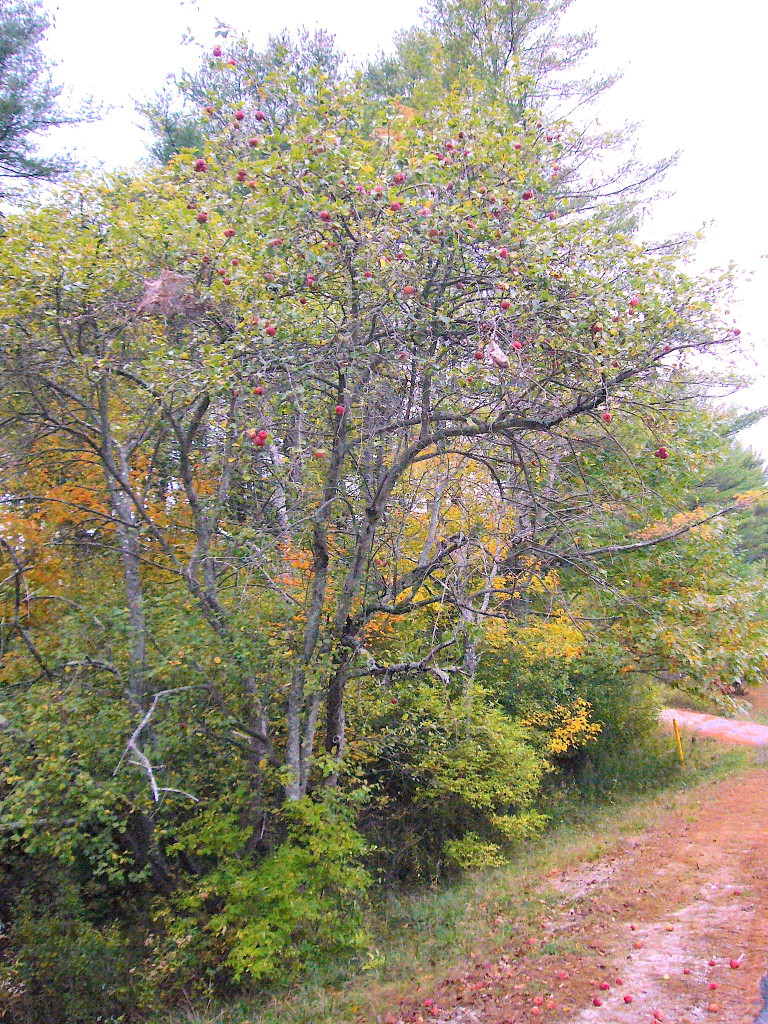
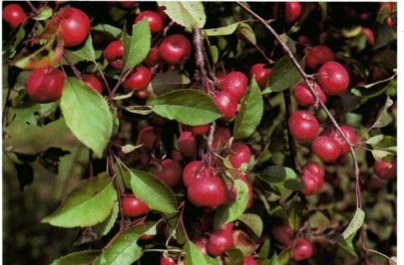
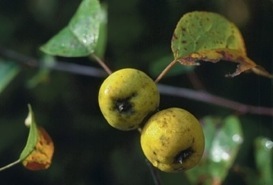
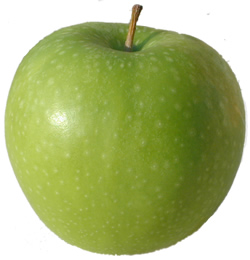
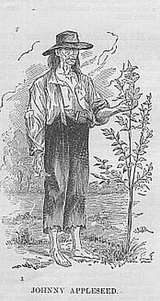
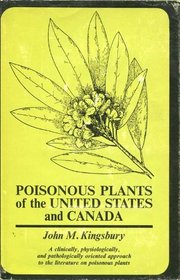
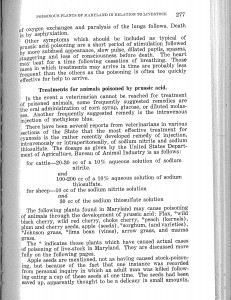

hi i have been eaten wild apples all my life i live in canada saint john new brunswick and we have alot of differnt trees and just last night i took my girlfriend picking them and she was shocked i eat them well i dont swallow them i just chew them and suck the juice and some times i eat 20 or more is this going to hurt me if anyone knows get back to me anthony apple seed lol
You know very well that apple seeds contain arsnic…
Cyanide naturally… arsnic when man raised.
Apple Cider contains seeds and all (at least here in my area). I’ve not heard that drinking too much cider would hurt ya, except maybe having the runs…lol. Myself, I always loose the seeds before I eat an apple.
Very interesting! That explains why the Gala apple tree I bought produced Golden Delicious apples. It could be the tree was mis-labeled, or it could be the propagation just didn’t turn out right.
Just FYI, the Golden Delicious was first discovered in Clay County West Virginia
Amygdalin is also called Laetrile – supposedly kills cancer cells.
We are producing from wild apple, tea, vinegar and juice, all certified organic by EU, USDA and Serbia from 2013 harvest. Health wise is much better then same product from domestic apple. Available on market from may 2014.
So, my ‘flowering crab-apple’ is just a small size apple in disguise? I planted a flowering crab-apple, Newtown Pipin, Fuji, Anna, and Dorset. I’m hoping that I will get apples at least some years here in central Texas. My 4-5 year old trees, the crab-apple already puts out a dozen or so fruits, but nothing on the others yet.
I also live in Florida and was just wondering if you’ve ever run across a pond apple. I have some by me and though they taste more like a melon they are pretty sweet. They grow in standing water or swamp areas.
I have an article on pond apples. I see them often in south Florida and mention them in my current newsletter.
I love reading your articles. I was reading about when to harvest Jerusalem artichokes and I found the answer in your article about them.
I was “born and raised” in West Virginia. The only history class I ever truly enjoyed was 8th grade West Virginia History where I learned about everything from Aaron Burr and Harman Blennerhassett to the origins of the original Golden Delicious apple tree and the surveys of Daniel Boone and George Washington in what is now West Virginia. As a side note, the Grime’s Golden also has its origins in West Virginia.
The Golden Delicious was a chance seedling, possibly a hybrid of Grimes Golden and Golden Reinette. The original tree was found on the Mullins’ family farm in Clay County, West Virginia, United States and was locally known as Mullin’s Yellow Seedling and Annit apple, sold to Stark brothers nurseries, which first marketed it as a companion of their Red Delicious in 1914.
Hello,
Thank you for this article which Google put up as one of the first results when I searched on wild apples.
In Europe, wild apples are Malus sylverstris.
I would be really surprised if you had Malus sieversii in North America as it is native to Central Asia as you rightly point out.
See: http://plants.usda.gov/core/profile?symbol=MASI10
http://plants.usda.gov/core/profile?symbol=MASY2
Two of the pictures on this page look more like M. sylvestris than M. sieversii.
The below reference lists the following (native) wild Malus on the Eastern Sea board (I referenced Canada as you mentioned Maine):
http://www.inspection.gc.ca/plants/plants-with-novel-traits/applicants/directive-94-08/biology-documents/malus-domestica/eng/1404417088821/1404417158789?chap=5
the Southern crab apple: M. angustifolia (and the prairie crab apple, M. ioensis)
However, the main point which we can all agree on 🙂 is that all Malus are “wildly” promiscuous so there are huge numbers of hybrids and also that you folks in the US have a great resource here: http://plants.usda.gov/java/
Kind Regards
Jonathan
There’s an apple called the Jonathan.
Hello Green Deane,
I live on Long Island , NY and moved into a home that has a tree that produces these small green misshapen apples and I was wondering if these are “wild apples” and if so can we eat them raw or cooked. Can I send you a picture of the tree and the apple I would for you to see exactly what I have so that I don’t end up eating something that is not good.
Thank you for your time,
Marie
Sure, no problem. Or you can post it on the Green Deane Forum which has a UFO page, unidentified flowering objects.
Hi there,
I live in Ontario and recently found a wild apple tree in my yard. Many of the apples have been damaged by Apple maggots and Codling moth. However, I was able to use a ladder to get some from high off the tree that look nice. My little girls had eaten a few before I learned about these pests. I notice that some that look nice but have a tiny black “sting” on the skin and look clean on the inside. If we have accidentally eaten the eggs of the maggot will we get sick or simply pass them with our food? Should I stop letting my girls eat these wild apples? I was so excited about having our own apple tree. Thanks.
They are protein-rich apples. Our ancestors would have considered them a bonus.
the black ‘sting’ is probably just from apple scab and is harmless to eat.
Just watched the wild apple video. Loved it. Liked some of those crab apples. A crab apple is 2 inch diameter and under an apple is 2 inch diameter an over. A wild apple has thorns. Many modern varieties of apple have been discovered on a fence row by chance breeding. Just because the apple looks small don’t mean the tree always produced little apples. Crab apples make the best jellies. Stores only sell around 10 varieties check your local farmers market for better selection. Some crab apples are super sweet.
Does any body know if it’s safe to blend wild crapples with water and strain them to make a drink
Don’t eat the seeds, which is about the only precaution. Crab apples tend to be tart or bitter and often respond better to roasting.
I hadn’t ever thought of roasting wild apples before. They actually grow close to where I live. I’ll have to give that a shot.
My dad had a quick way of knowing whether or not an apple was worth trying (at least here in Ontario). If you know it’s an apple in front of you, check if the underside of the leaf is downy. If it’s downy, it’s more likely to be a seedling from an edible (m. domestica) apple and less likely to be mouth-puckeringly tannic. If it’s smooth on the underside, it’s more likely to be tannic and bitter.
Interesting… thanks for sharing.
Hi I would like to purchase some hedge apple capsules could you contact me with the price ect. or you can call me at 567 231 3047 Thanks
Crab apples are popular for making cider. Sour, tannic apples are the best for cider. And I’m talking about real cider where the sugars are fermented into alcohol, not the post-prohibition idea of cider that’s nothing more than spiced up apple juice warmed up on a stove, which I call false-cider.
The flavors of these can vary from tree to tree even in the same cultivar. They’re so heavily hybridized, artificially and naturally, that it’s practically impossible to predict what a fruit’s going to taste like without just diving in and taking a bite.
I found a particularly sweet variety with bright reddish-orange apples about the size of large cherries on one tree near a lake in my town. It bears heavily every few years and I was able to gather quite a large number of them. Mixed 1/2 and 1/2 with quince and sugar, the boiled-out juices made a wonderful jelly sweet-tart with a rich flavor.
My husband grew up in south Texas and me in South Central Texas. We both ate crabapples. And another one our parents called chew apples. When ripe they are brown and sweet! They’re the size of crabapples. Have you heard of these? I can’t find any info on them
You might be interested to read this study on the impacts of the gut microbiota on the processing of amygdalin (apple seeds) into cyanide, and how that varies from person to person. It explains the mixed results in cancer studies and the random harmful side effects. https://www.sciencedirect.com/science/article/pii/S2405580817302637
The timing of recycling this article about crabapples couldn’t be better for me. Last month, a friend gave me a three foot tall crabapple tree in a bucket then unfortunately he suddenly died a week later. He’d said only that it was a cutting from a tree where the fruit was about two inches in diameter. Of course, I won’t confirm that for a few years.
I’ve been told that when they bloom they’re beautiful trees and I want to preserve it but I didn’t know what to expect as to height, fruiting and animal interactions; I live next to a nature preserve. You’ve helped me to decide where to place it and what to expect. Thank you.
I have one in my yard. A 3-ft plant from Home Depot ( 15 yrs ago) that now have blossomed into a 20 ft tree with all the red blossoms in April. Check out the foll links.
https://www.greenandvibrant.com/crabapples
https://www.youtube.com/watch?v=mKcxwqT51AQ
Last spring I noticed leaves coming off my apple trees. As time went on more leaves dropped from my three trees: Jonagold, Granny Smith, and Red Delicious. Branches still green with apples still on them. I live in Ohio. Help Please.